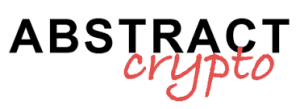With Project Crypto, the Securities and Exchange Commission (SEC) is making a groundbreaking move from June 22, 2024: it aims to modernize securities regulations, enabling for the first time the trading of tokenized assets and crypto-based financial products on U.S. soil.
What is Project Crypto by the SEC and why is there talk of revolution?
Project Crypto is the new official initiative of the SEC, announced by the chairman Paul Atkins, aimed at integrating blockchain technology and tokenization into the management of financial securities in the United States. The project aims to overcome the regulatory barriers that have so far kept digital assets, smart contracts, and digital representations of public securities away from traditional financial markets.
In practice, the aim is to allow investors and institutions to trade traditional securities like stocks and bonds directly on the blockchain, through digital tokens, without going through a complex chain of intermediaries.
This is a response to the growing demand for tokenization — that is, the representation on blockchain of real assets and securities — which in recent months has seen a surge of interest from major investment platforms and institutional operators.
What are the objectives of Project Crypto? What changes for trading and DeFi?
The objective of Project Crypto declared by Paul Atkins is clear: modernize SEC rules making them suitable for the digital age, so as not to stifle innovation and to prevent companies in the crypto sector from migrating to more permissive jurisdictions.
New regulatory frameworks will be introduced that will make it possible to create, manage, and exchange tokens representing traditional securities directly “on chain”.
For the first time, even non-traditional entities — crypto-native startups, exchanges, and DeFi platforms — will be able to legally participate in the US financial market, adhering to new guidelines specifically constructed for digital.
The SEC also promotes collaboration between regulators and companies, focusing on public discussion tables together with the President’s Working Group on Digital Asset Markets. The intent is not only to control but also to stimulate U.S. leadership in digital finance and fully leverage the pro-innovation “Trump Effect.”
Super financial apps and blockchain: the role of integrated platforms
The decision does not come by chance: according to the SEC, the push towards Project Crypto is also a response to the rise of super apps, that is, platforms that combine traditional financial services with crypto innovation, NFT, exchange of Bitcoin and blockchain — like the one launched by Coinbase.
These applications offer integrated services ranging from trading to portfolio management, up to loans and payments, promoting an all-in-one ecosystem for users.
The risk, highlighted by the SEC, is that without adequate regulatory frameworks, many of these innovations may move abroad, draining investments and know-how from the U.S. market.
What does the SEC chairman Paul Atkins think? What risks and opportunities does he highlight?
Paul Atkins emphasized, during the announcement, that a “one-size-fits-all” approach is no longer suitable for the current market. He stated: “The goal is to give crypto companies the opportunity to operate here, without being forced to seek less rigid environments abroad.”
Atkins thus promotes flexible, dynamic, and suitable rules for crypto-native realities, without hindering innovation but at the same time ensuring protections for investors.
The main risk? According to the SEC, the absence of regulatory clarity could lead to the loss of the United States’ global leadership in fintech and digital markets. On the other hand, embracing tokenization with clarity can open the doors to new capital, record liquidity, and the “mainstream adoption” of digital financial services.
What happens now? Timeline, next steps and expected impact on Bitcoin, memecoin and DeFi
After the official announcement on June 22, 2024, a public consultation will begin involving exchanges, startups, funds, and trade associations. In the coming weeks, draft rules for the implementation of tokenization and digital securities in the main regulated markets will be published.
The operators of Bitcoin, memecoin, DeFi projects, and exchanges will need to closely monitor the evolution of the framework: those who follow the new SEC rules will be able to access the US market with greater legal and operational security, finally leaving behind the risk of arbitrary enforcement.
Watch out for warnings: the SEC promises heightened vigilance on fraud, “pump and dump,” and manipulation of tokens, memecoin, or stablecoin created without solid foundations.
What impact will Project Crypto have on financial innovation in the USA?
The debut of Project Crypto changes the geography of financial innovation in the United States: for the first time, the regulator and the crypto ecosystem officially collaborate, opening a new era for blockchain, asset tokenization, and decentralized finance.
In perspective, Wall Street and Silicon Valley will be able to compete fully with Europe and Asia, avoiding the flight of skills and capital that regulatory rigidity had triggered in recent years.
Conclusions: what prospects for blockchain, tokenized assets, and regulation?
Project Crypto marks a historic turning point: the SEC acknowledges that blockchain and tokenization are now an irreversible revolution, and it is preparing to lead it as a protagonist, no longer as a spectator.
All operators — investors, startups, exchanges, developers — will need to closely follow developments and participate in the public consultation: the future of digital financial markets in the United States now depends on the balance between innovation and protection. Follow the official communities and SEC channels for all updates: everything can change in the coming weeks.


